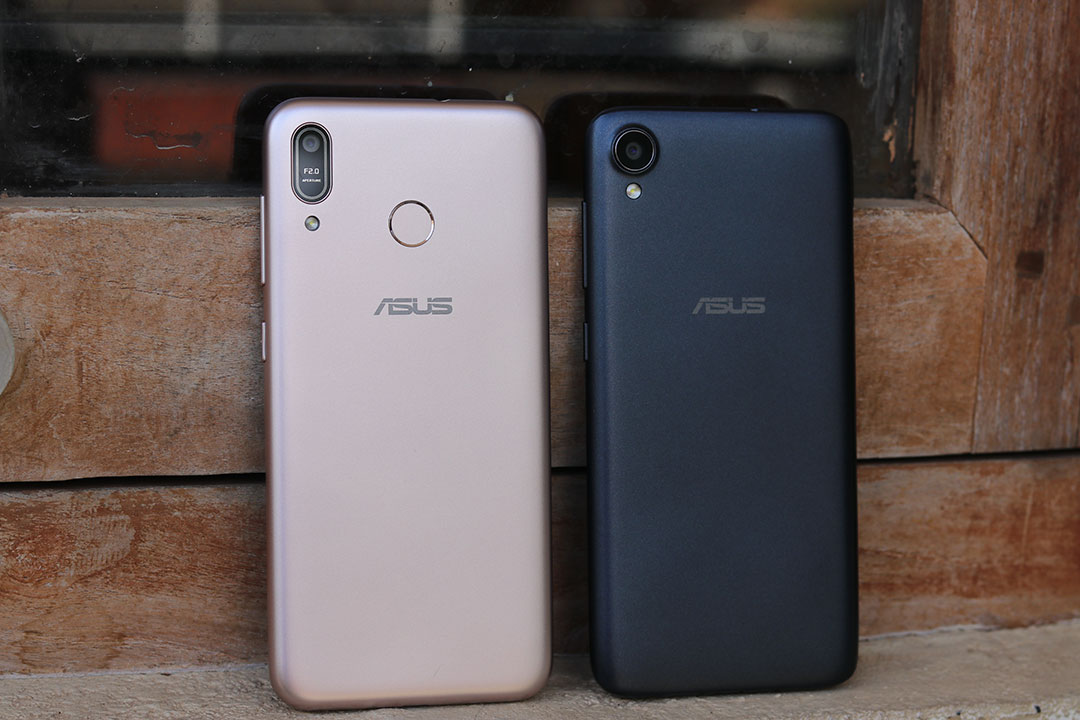
What is common between Zenfone Lite L1 and Max M1?
Both the Smartphones come with a similar 5.45-inch HD+ display with screen resolution of 1440 x 720 pixels, 18:9 aspect ratio, 400 nits brightness, 800:1 contrast ratio and 65 per cent NTSC colour gamut.
Powering both the Zenfone Lite L1 and Max M1 by Snapdragon 430 processor along with Adreno 505 GPU.
The rear camera is 13-megapixel rear camera with f/2.0 aperture, 1.12-micron pixel size, PDAF and LED flash in both the phones.
What are the differences between Zenfone Lite L1 and Max M1?
The Zenfone Lite L1 as the name mentions is a lighter version with a 2GB RAM and 16GB storage. Whereas the Max M1 has a 3GB RAM and 32GB storage option.
The front camera varies between both with a 5MP equipped with the Lite L1 whereas the Max M1 has a slightly better megapixel with an 8MP selfie camera.
On the battery side, the Lite L1 has a 3000mAh battery while the Max M1 has a 4000mAh battery pack inside.
The Zenfone Max M1 features a fingerprint sensor and face unlock, while the Lite L1 is only equipped with a facial recognition feature.
The Zenfone Max M1 measures 147.3 x 70.9 x 8.7mm and weighs 150 grams, while the Zenfone Lite L1 147.26 x 71.77 x 8.15mm and weighs 140 grams.
Design and build quality of Lite L1 and Max M1
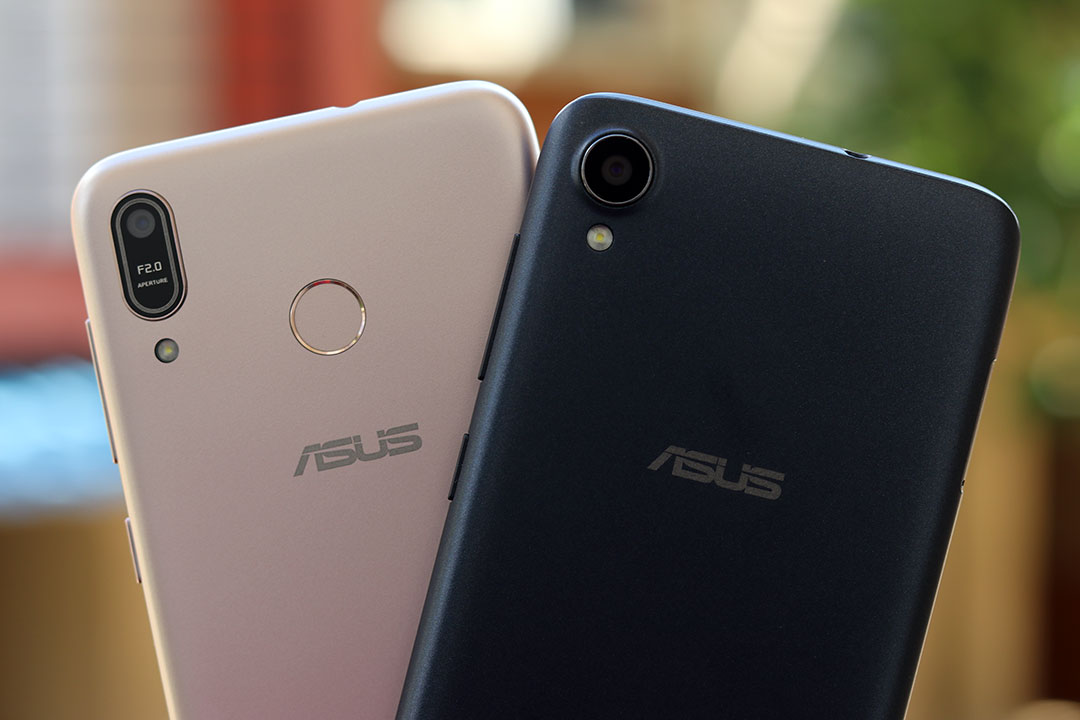
Both the Smartphones are made of plastic and have a similar design. The only giveaway is at the rear with the Max M1 having a fingerprint scanner. Also, the camera module is different in both the phones, though it’s a single camera, the Max M1 has a capsule module giving it a faux-dual camera setup look. The build quality is average. The phones are available in black and gold colours.
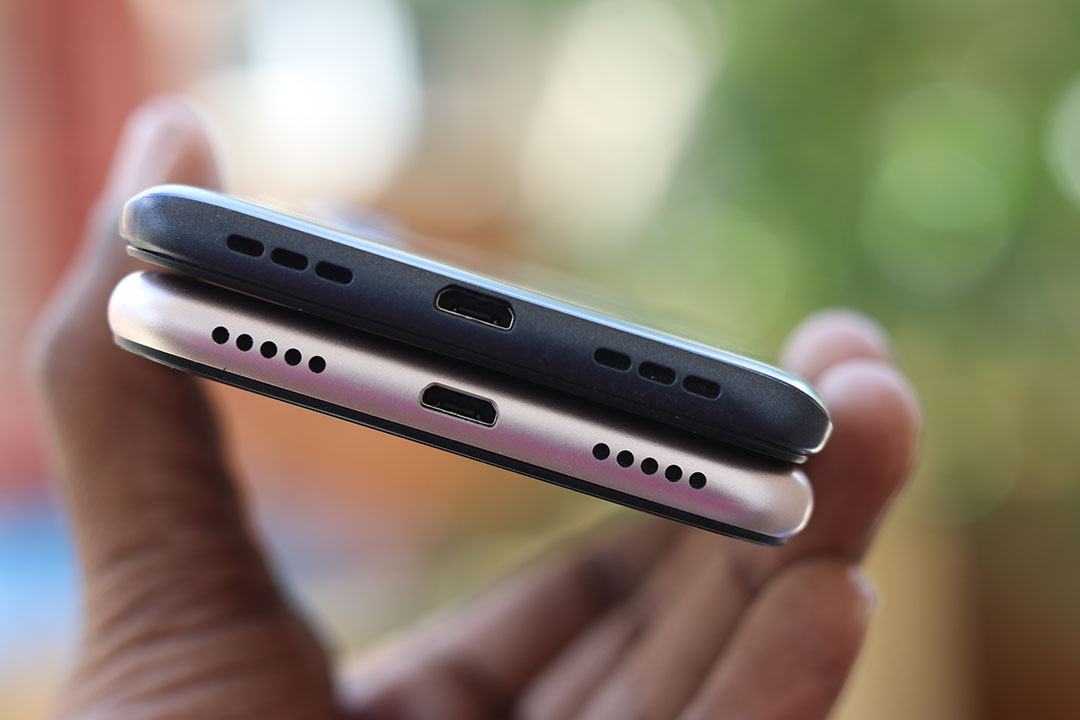
Both the phones have a triple slot SIM trays that can accommodate two SIMs and one dedicated microSD card. They don’t support dual VoLTE which means only one SIM support 4G at a time.
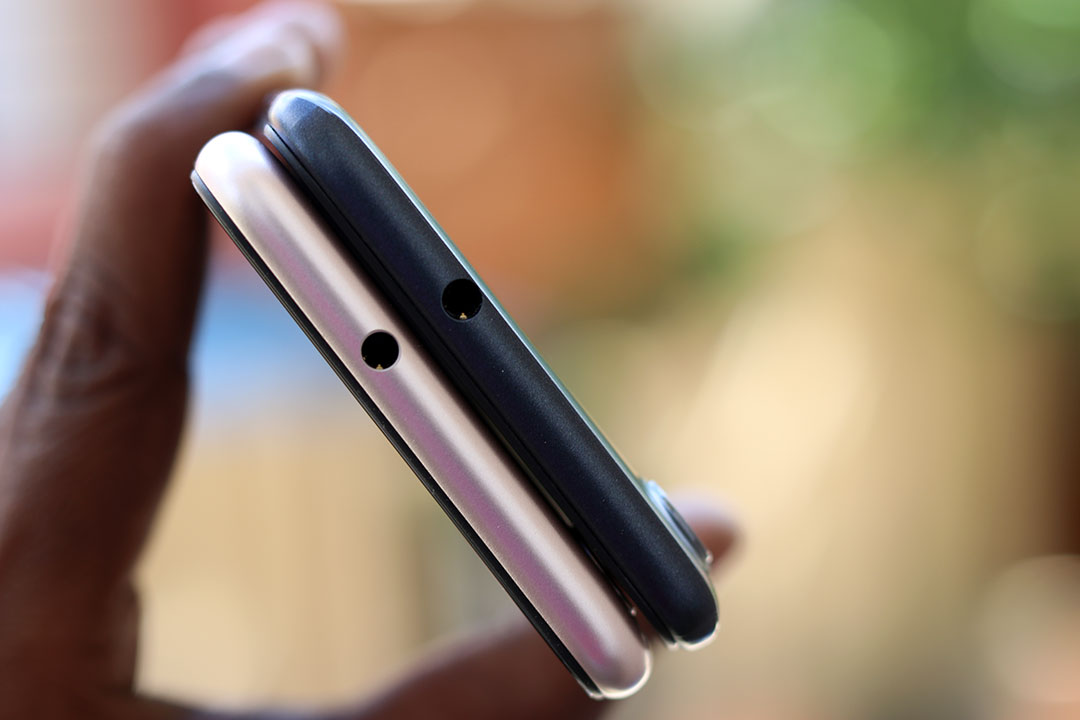
The phones are compact in size and extremely comfortable for one hand use. They are also lightweight.
Software features of Zenfone Lite L1 and Max M1
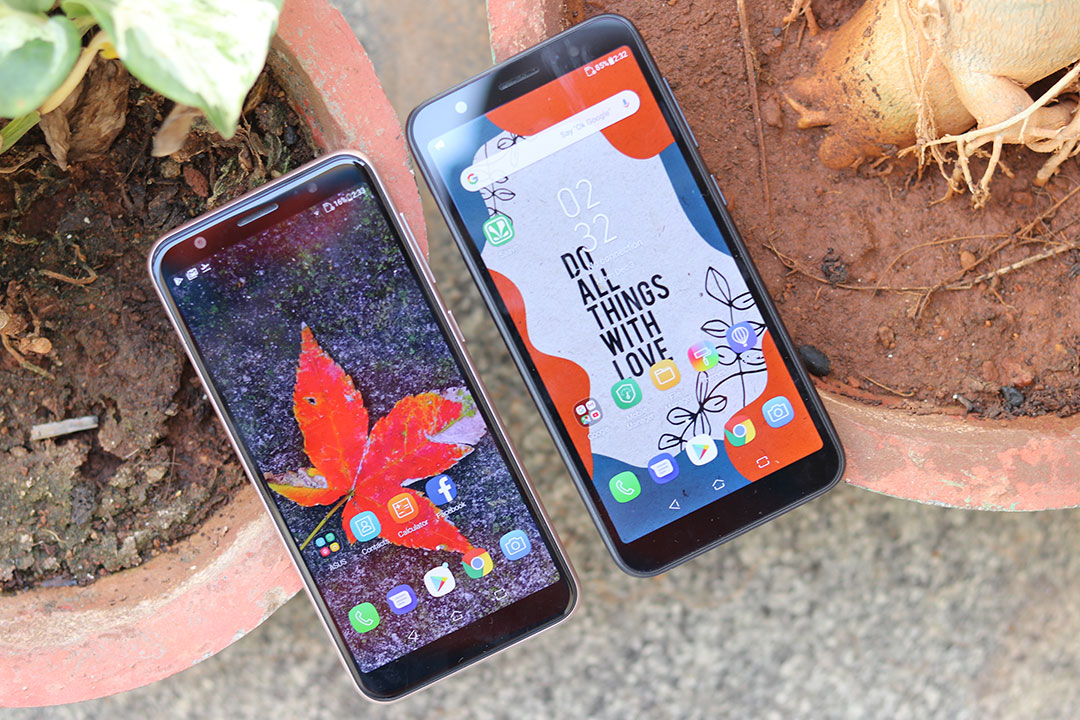
Both the phones run on Android Oreo with ZenUI on top. Asus has made good progress in the UI skimming out most of the bloatware that plagued the ZenUI in the past. There are few third-party pre-installed apps like Facebook, Facebook Messenger, Instagram and necessary Google apps. The UI also comes with Asus own apps such as Weather, Sound Recorder, Mobile Manager, and File Manager. The PowerMaster battery app gives different battery modes and power saving options.
There is no FM app, OTG is supported.
The fingerprint sensor in Max M1 works decently well for the category and the face recognition on both the phones are fairly good too.
Performance of Zenfone Lite L1 and Max M1
The Snapdragon 430 is slightly aged out now, though it still works for an entry-level smartphone. It is strictly meant for basic tasks. While the Max M1 is a little bit better equipped with a 3GB RAM, the Lite L1 struggles a bit with longer load times and random slowdowns due to its 2GB RAM. If your main use of a Smartphone is called, WhatsApp, watching Youtube and social apps, both the phones should suffice. Casual games can be played, while even PUBG can be attempted the experience might not be very smoother.
Out of the 16GB of storage, the Lite L1 has, the available storage is about 8GB for apps and games. So if you are someone who is habitual of installing many apps or games, you should consider Max M1 instead. The phone doesn’t allow microSD card to be used as a fixed storage to mount apps.
Camera performance of Zenfone Lite L1 and Max M1
The camera app is identical in both the phones, so is the rear camera performance. The app has Beautify, Panorama and Time Lapse modes, apart from the usual Photo and Video modes. The quick toggles include HDR, the flash, portrait mode, and a timer.
Zenfone Lite L1 Camera Samples:
[gallery link="file" columns="5" ids="14353,14354,14355,14356,14357"]
The camera performance can be summed as average. Shots taken at daylight tend to be better in both the phones. Though it lacks a bit o details. The color reproduction is fairly good. Edge detection is not the best but is manageable. Selfie come decently well in Lite L1 as compared to Max M1, though the later has a better megapixels. Focus tend to struggle a bit during macro shots. As expected in this price range, the low light pictures are bit noisy and misses out on details.
Zenfone Max M1 Camera Samples:
[gallery link="file" columns="5" ids="14363,14362,14361,14359,14358"]
Battery performance of Zenfone Lite L1 and Max M1
If battery life is a big concern for you, you should be thinking of Max M1 which has a bigger 4000mAh battery and better battery life between the two. It helps to power the phone for one and half a day easily. The Zefone Lite one on a moderate use can sail through a day.
Verdict
While Asus has made a decent attempt at reaching over the segment, there is tough competition with the likes of Redmi 6 and RealMe C1. There is also Infinix Smart 2 in the picture. What might work for Asus is the non-Chinese tag and also the branding which is still positive amongst the consumer mind. The goodwill the Zenfone Max M1 Pro gained with constant updates might also give the new phones the edge. If you are looking for an entry-level Smartphone for basic tasks, the Lite L1 could work but between the two I would suggest the Max M1, which packs the extra RAM, storage and battery life.]]>
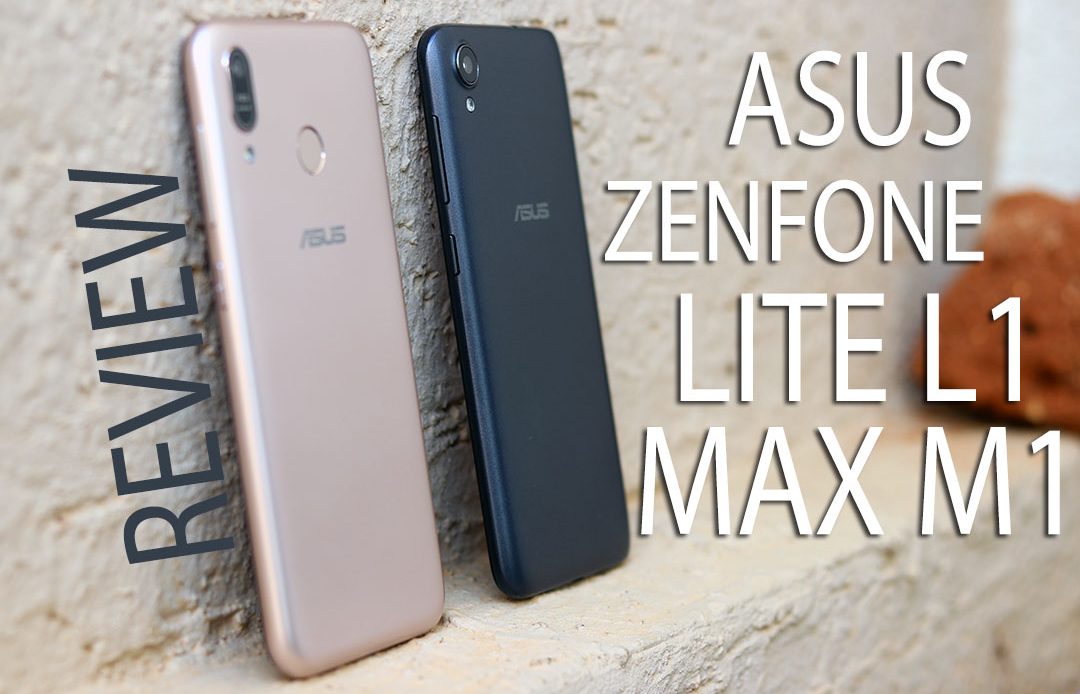

 Both the Smartphones are made of plastic and have a similar design. The only giveaway is at the rear with the Max M1 having a fingerprint scanner. Also, the camera module is different in both the phones, though it’s a single camera, the Max M1 has a capsule module giving it a faux-dual camera setup look. The build quality is average. The phones are available in black and gold colours.
Both the Smartphones are made of plastic and have a similar design. The only giveaway is at the rear with the Max M1 having a fingerprint scanner. Also, the camera module is different in both the phones, though it’s a single camera, the Max M1 has a capsule module giving it a faux-dual camera setup look. The build quality is average. The phones are available in black and gold colours.
 Both the phones have a triple slot SIM trays that can accommodate two SIMs and one dedicated microSD card. They don’t support dual VoLTE which means only one SIM support 4G at a time.
Both the phones have a triple slot SIM trays that can accommodate two SIMs and one dedicated microSD card. They don’t support dual VoLTE which means only one SIM support 4G at a time.
 The phones are compact in size and extremely comfortable for one hand use. They are also lightweight.
The phones are compact in size and extremely comfortable for one hand use. They are also lightweight.
 Both the phones run on Android Oreo with ZenUI on top. Asus has made good progress in the UI skimming out most of the bloatware that plagued the ZenUI in the past. There are few third-party pre-installed apps like Facebook, Facebook Messenger, Instagram and necessary Google apps. The UI also comes with Asus own apps such as Weather, Sound Recorder, Mobile Manager, and File Manager. The PowerMaster battery app gives different battery modes and power saving options.
There is no FM app, OTG is supported.
The fingerprint sensor in Max M1 works decently well for the category and the face recognition on both the phones are fairly good too.
Both the phones run on Android Oreo with ZenUI on top. Asus has made good progress in the UI skimming out most of the bloatware that plagued the ZenUI in the past. There are few third-party pre-installed apps like Facebook, Facebook Messenger, Instagram and necessary Google apps. The UI also comes with Asus own apps such as Weather, Sound Recorder, Mobile Manager, and File Manager. The PowerMaster battery app gives different battery modes and power saving options.
There is no FM app, OTG is supported.
The fingerprint sensor in Max M1 works decently well for the category and the face recognition on both the phones are fairly good too.

